Book: Health and Fitness
Author: Nayma Nishat - Researcher, Health & Fitness
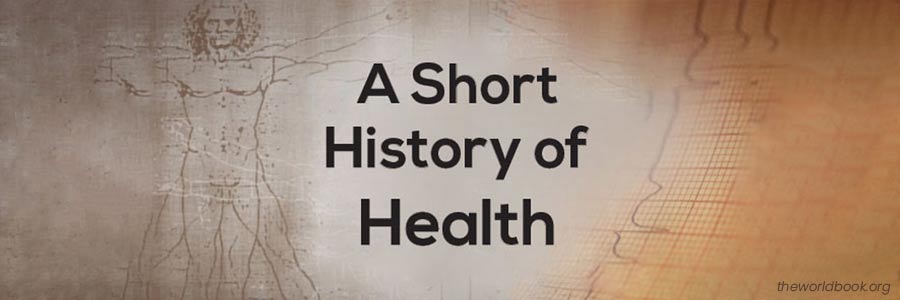
Friends, have you ever wondered what is health? Sure you can know if you are healthy, but you may have trouble defining the concept. Not surprisingly, the term health has had different nuances throughout history. Today, we are going to briefly see what has been the history of health since it emerged until today.
The history of health is derived from many historical ideas, trial and error, and the development of basic sciences, technology, and epidemiology.
Studying history is important because it provides a perspective to develop an understanding of the health problems of communities and how to cope with them.
From the concept and history of health, we can know how societies conceptualized and dealt with the disease. All societies must face the realities of disease and death, and develop concepts and methods to manage them.
These strategies evolved from scientific knowledge and trial and error, but are associated with cultural and societal conditions, beliefs, and practices that are important in determining health status and curative and preventive interventions to improve health.[1]
If we ask several people what they understand by health, we will surely get a variety of answers: some will say that it is not being sick or getting sick a little, others that it is feeling good, others that it is being able to live as they wish to an advanced age, develop fully, sustain an acceptable quality of life, live in harmony with the environment and so on.
Recognizing that all people do not understand the same when we say health allows us to advance in the conceptualization of the practice related to promoting, maintaining, and recovering health from an equity and law perspective.
Now, health is considered in all cultures a good whose conservation and recovery appears as one of the most important needs, both from the perspective of people and of society itself.
However, not all of us understand the same when defining what is understood by health, since it involves knowledge, beliefs, norms, traditions, and values. In fact, health is not a particular concept but a sociocultural construction relative to each historical moment and different cultures.
Those of us who work in health, through the bond with people, can recognize the different representations or images about health. For example, for the reasons of consultation: some mothers quickly bring their children to the consultation for fever, diarrhea, vomiting, respiratory problems; others take a little longer because they ask for help from their relatives, neighbors, healers, or even the nearest pharmacy.
Surely these situations lead us to reflect on why some people have different feelings and behaviors in the face of similar problems.
So, we can ask ourselves:
“Health is not only the absence of disease, but it is something positive, a joyful attitude towards life and a joyful acceptance of the responsibilities that life places on the individual” Sigerist (1941).
“The state of complete physical, mental and social well-being and not only the absence of disease” WHO (1945).
“The state of adaptation to the environment and the ability to function in the best conditions in this environment.” R. Dubos (1995).
“Health is the balance between natural and spiritual forces between individuals and communities. Health is seen as a holistic whole of physical, moral, social, spiritual well-being, and cosmic balance, a whole. The disease exists due to imbalance, subjection and lack of harmonious coexistence ” (a member of an aboriginal community in the Workshop on interculturality in Health -Representatives of different Indigenous Territorial organizations and the PMC-Ministry of Health of the Nation- City of Buenos Aires- October 2009).
“The degree to which a person or group is capable, on the one hand, of carrying out their aspirations and satisfying their needs and, on the other, of coping with the environment. Consequently, health should be considered not as a goal in life but as one more resource of daily life. Health is a positive concept that includes personal and social resources, as well as adequate physical capacity” (European WHO-1985).
For many people being healthy is the same as feeling good, this would be a very good definition and refers to perceived health. In other cases, some people define themselves as healthy when they know or assume that they are not sick, here health is defined by the absence of disease.
However, there is not the same type of consensus when defining what is understood by health, since it involves knowledge, beliefs, norms, traditions, and values.
In fact, health is not a univocal concept but a sociocultural construction relative to each historical moment. Regardless of the time in which they were generated, at present these conceptions coexist contradictorily, guiding the whole range of social, health, and health team practices.
To understand this in-depth, we must first address what culture is and then understand the historical process through which the concept and history of health passed.
It has always been easier to characterize the situation of illness than that of health. Perhaps because the painful and limiting manifestations that the disease produces were what forced men to seek remedies to eliminate or mitigate them.
Here you will find some conceptions of the evolution of ideas about health and disease. Each of these moments and conceptions has also implied a way to preserve and regain health.
Like all cultural products, health is not a concept that remains identical to itself over time. We can reconstruct different meanings that it has acquired in different societies, in different historical moments and different cultures.
Let’s know about a short history of health, health issues & the development of Medications of different ages.
The ancient Greeks’ apprehension of health and illness was based on the theory of the four ‘fluids’ (blood, phlegm, yellow bile, and black bile) that is in its turn premised on the theory of the four elements (fire, earth, water, and air) and their four corresponding qualities (heat, dry, humid and cold). All these theories have as a starting point the number 4, which was of great significance for Pythagorean philosophy that dominated the pre-Socratic period.[2]

In ancient times, man believed in the injuries or diseases inflicted by spirits or other-worldly predators. People had to rely on available resources for treatment. They mostly used plant and plant extracts such as Digitalis[3] from Foxglove Plant and Quinine[4] from the bark of Cinchona Tree etc.
In ancient China, it was believed that the sky, light, strength, cold, humidity, and other elements of nature, influenced health. Other cultures thought that sickness and death were caused by evil spirits.
Thus, diseases at first considered magical, were strongly linked to the supernatural and those who cured them were those who could get involved with these spirits, they were witches, magicians, or shamans.
In Western culture, while the ancient Greeks made health a cult, the Romans developed an interest in the disease.
Egyptians were the earliest civilizations to keep accurate health records. They were superstitious, believed in calling upon Gods, and were able to identify certain diseases.
At that time, priests were considered to be doctors. Magicians were also considered to be the healers. Research on Mummys has revealed the existence of diseases like Arthritis and Kidney Stones.[5]
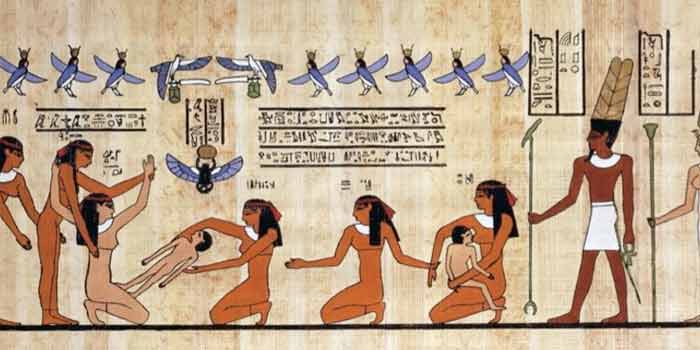
Jewish people avoided medical practice. They believed that God is the only physician. They concentrated on health rules concerning food, cleanliness, and quarantine.
Greeks were the first to study the cause of the disease and helped eliminate superstition. Hippocrates[6], the father of medicine, wrote the standards of ethics which form the basis for today’s medical ethics.
Romans learned from Greeks and developed public health systems. They were the first to organize medical care with Army hospitals.
During the Dark Ages, the learning and culture of the Greco-Roman world were preserved. Medicine is practiced only in convents and monasteries. Custodial care[7] was provided. Life and death were considered to be in God’s Hands.
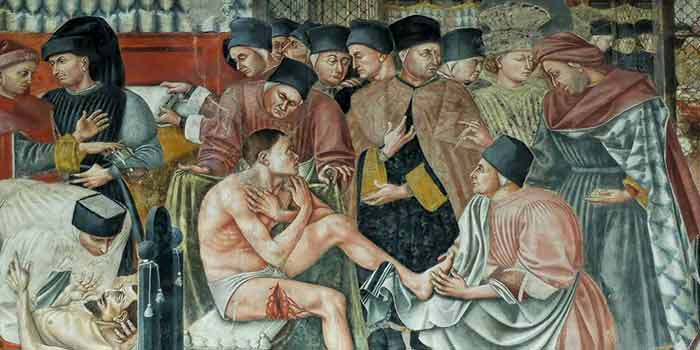
The most important disease of the period was leprosy[8], manifested by a continent-wide epidemic beginning in the 16th century. Besides this, Plagues, Small Pox, Diphtheria, Syphilis, Measles, Typhoid, and Tuberculosis were rampant.
It was during the Renaissance, a period of great commercial, scientific, cultural, and political development, that the bubonic plague, or ‘Black Death’, swept over Europe and the Near East killing an estimated one-fourth to one-third of the population between 1347 and 1351.[9]

At that time, medical researchers continued their Renaissance-evoked practices into the late 1600s. Progress made during the Medical Renaissance depended on several factors and book publishing was started.
This was the time after the renaissance, where more discoveries continued to flourish in the medical field. Apothecaries[10] were pharmacists from this time who created, prescribed, and sold medicines for people.
The microscope was invented in 1666 and was used to examine infections and diseases. And the average life span was raised to 35 to 40 years old.
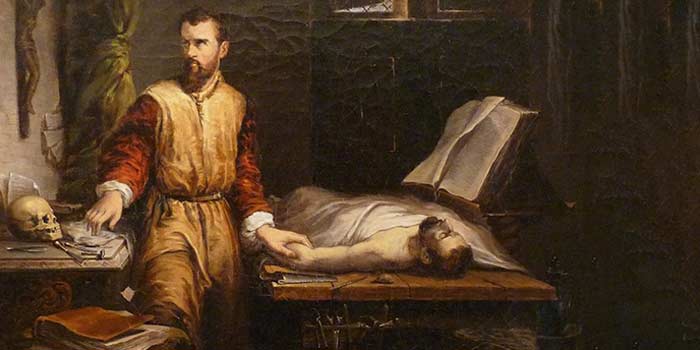
Stitching was invented as a better and safer method of closing wounds and to stop bleeding.
Fallopian tubes were found in the female anatomy and discovered how it relates to pregnancy and menstruation.
Prosthetic limbs were invented for the treatment of broken bones and fractures. Blood circulation was identified and the first blood transfusion was accomplished from animals to humans.
In the 18th century the search for a simple way of healing the sick continued. Doctors were at the top of the professional Hierarchy in the 18th century. A Doctor was considered to be a man of science.
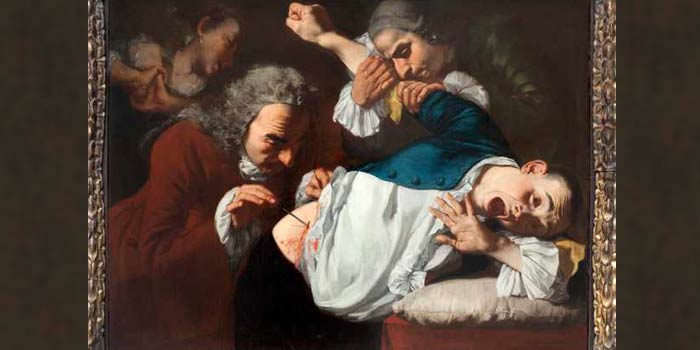
A Doctor would concentrate on his work on three specific important aspects. These aspects required a good knowledge of everything about medicine and pharmacy. The three aspects were:
During the18th century, Smallpox Vaccination was developed, Oxygen was discovered, Bifocals and Stethoscopes were invented.
With the advent of modernity and the great discoveries in physics and chemistry, human physiology is associated with the concept of the machine and, therefore, the disease begins to be understood as the deviation of the functioning, and the cure, the repair of it. In this way, medicine becomes subordinate to biology and human beings to be looked at through their organs and apparatus.
In the 19th century, the discovery of germs gave rise to the microbial theory, which encouraged the idea of a single cause, according to which, to control diseases, it was only necessary to discover its cause for each disease.
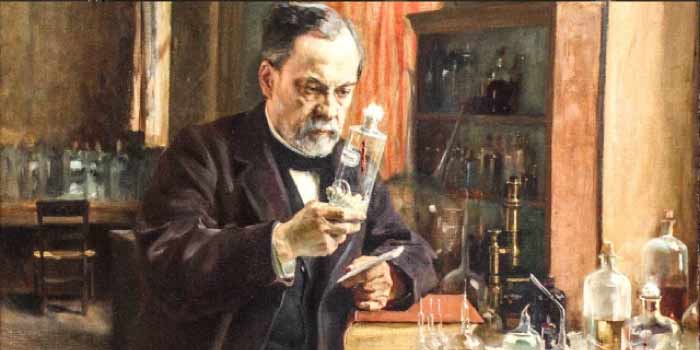
This theory had such a significant impact that physicians made enormous attempts to associate virtually every known disease with a specific contagious causative agent. Thus, the development of antibiotics and vaccines, considered some of the most valuable achievements of scientific medicine, was facilitated.
But, as the evolution of the concepts does not stop, the microbial theory became insufficient to explain a large number of diseases.
With an eye on the many factors that intervene in the production of diseases, as opposed to the single cause, the scientists arrived at the replacement of this model by another: that of multi-causality.
The denomination multicausal alludes to the interaction of several factors of diverse origin and nature: social, environmental, economic, and others in the occurrence of disease. From this moment on, health begins to be conceived as a dynamic and variable process, of balance between the human organism and the environment, highlighting the influence of historical, political, economic, and social factors. Then we begin to speak of the health-disease process.
The rate of medical advances during the 20th century was enormous, due to improvements in technology as well as new scientific discoveries. Rapid growth in health care in X-rays, Medicines, like antibiotics to fight bacterial infection and vaccines to prevent diseases is a new development that saves many lives.

Achievements In Safer Healthier food, Safer Workplaces, Organ Transplants, Control of Infectious, Vaccinations, Diseases.
By the end of the century, the major global health problems included the various consequences of atmospheric warming; the rapid growth of the world’s population; the emergence of new infectious diseases, including HIV/AIDS (human immunodeficiency virus); and the increased production and use of addictive drugs. Besides this, the new health hazards are Diabetics, Neuroses, Lung Cancer, Breast Cancer, Hypertension, Leukemia, etc. These are daunting challenges for the World Health Organization (WHO) and other international agencies.
Today, our conceptions of health are strongly influenced by the multicausal view. It seems natural to us to think of health and disease as a process, as construction and we actively look for the factors and variables that intervene in their definition.
As far as we know today, there are many factors that, acting at the level of the human environment, determine that disease begins and develops in certain subjects, and affects with greater or lesser weight in certain population groups.
Natural circumstances and one’s biological endowment make sense to the development of one or more specific diseases, only understood in that context.
Since the last century, there have been three main approaches to the concept of health.
The medical model was the dominant one in North America throughout the 20th century. In its most extreme form, the “medical model” views the body as a machine, which will have to “repair itself” when it is “broken.” Health is therefore considered as the absence of disease.
This concept of health has some problems that do not accommodate mental or social problems and reduces the emphasis on prevention.
The holistic model of health is exemplified in the WHO 1946 definition, “a state of complete physical, mental, and social well-being and not just the absence of disease or illness.”[11]
The holistic model broadened the medical point of view and also introduced the idea of positive health (although the WHO did not originally use this term). This concept of health was in force in the world for many years, although its terms were vague. After all, how can physical or mental well-being be measured?
In 1984, a WHO working document proposed moving away from the concept of health as a state, and towards a dynamic model that presented health as a process or a force.
This was expanded in the Ottawa Charter for Health Promotion in 1986. The definition holds that health is “the degree to which an individual or a group is able to achieve their aspirations and satisfy their needs, also to adapt to the environment. environment. Health is a resource for everyday life, not the goal of life. Health is a positive concept, which emphasizes social and personal resources, as well as physical capacities”. Related definitions include some that view health in terms of resilience.
Undoubtedly the evolution of the concept of health has been interesting, from the simple absence of disease to the inclusion of the concept of well-being. Will there be more changes in the future? What do you think?
From the history of health, we come to know the evolution of health is a continuing process. In order to face the challenges ahead, it is important to have an understanding of the past.
The sense of health has evolved depending on the historical moment, the cultures, the social system, and the level of knowledge. In the first years of history, primitive thinking (magical-religious) was maintained for a long period, centered on the belief that illness was a divine punishment, this attitude is still maintained in some peoples of Africa, Asia, Australia, and America.
It was the Egyptian and Mesopotamian civilizations that initiated the first conceptual change, going from the magical religious sense to the development of personal and public hygiene. In ancient Hebrew civilization, the Mosaic Law contains one of the first sanitary codes of humanity: it prescribes strict regulations on personal hygiene, nutrition, sexual behavior, and prophylaxis of communicable diseases, some of them still in force.
The word hygiene as well as the current Hippocratic oath finds its origin in Greek culture, inspired by mythology, Higea “goddess of health” and Hippocrates “father of medicine”.
The Roman people applied their knowledge of urban planning to public health, building large aqueducts for the provision of water as well as for the removal of waste substances, a great work was the “Sewer Maximum”, a work admired today.
In the Middle Ages, when monastic schools appeared, in the School of Salermo, Hippocratic medicine was taught. A volume was produced containing numerous advice on hygiene. This hygienic sense of health has been maintained until a few decades ago.
The splendor of the Renaissance period also has its manifestation in the field of health promotion, introducing innovative ideas that motivated great advances in health.
The most important conceptual change took place in 1946 when the World Health Organization in its Magna Carta defines health as a “Complete state of physical, mental and social well-being”. There are numerous definitions that from this moment have been formulated on the concept of health, finding a common element in all of them, the formulation of health in positive terms, and considering this concept in an integrating plane of society and man.
Experience from the past is a vital tool in the formulation of health policy. An understanding of the evolution and context of those challenges and innovative ideas can help us to navigate the public health world of today and the future.
To learn more, you can go through my next writing Types of Health.
References
© 2025 The World Book. All Rights reserved.
Founder: Nayma Nishat